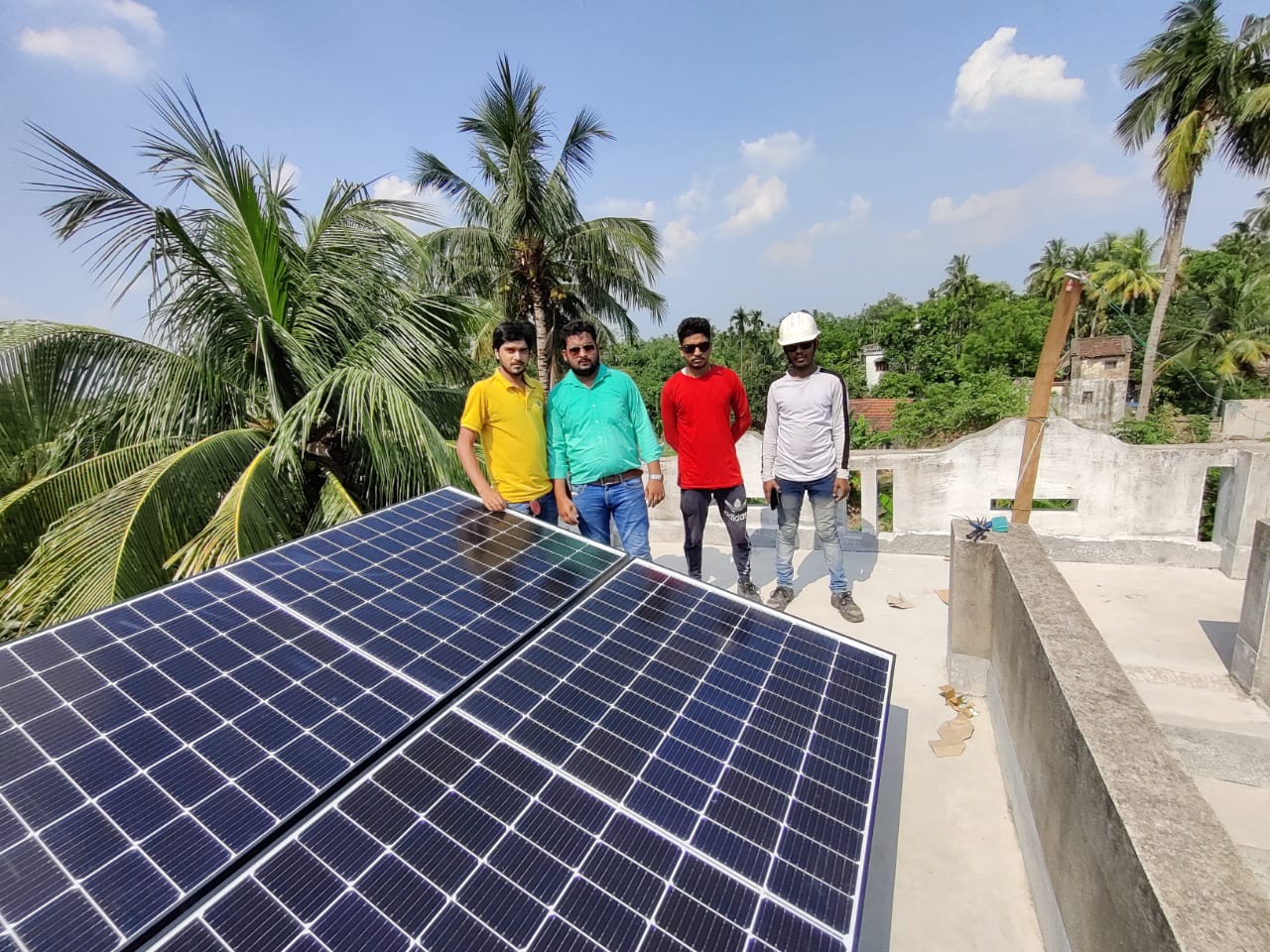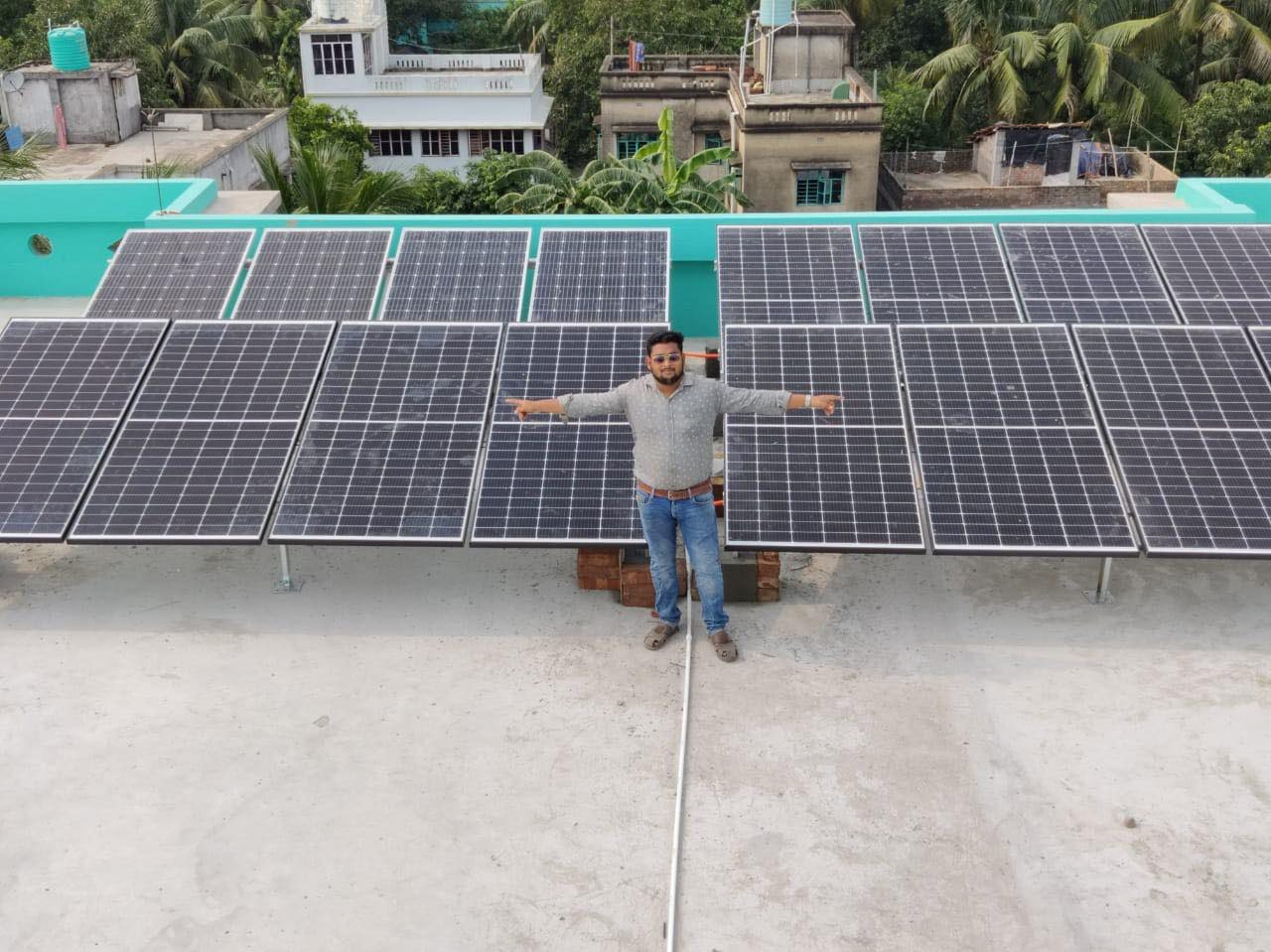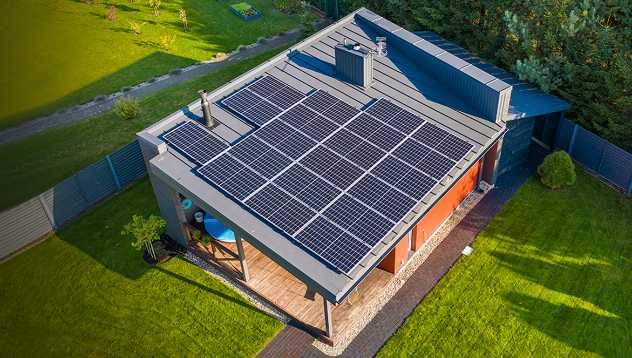The solar energy space in India has been explored by several startups with an entrepreneurial and innovative spirit. Both in terms of manufacturing and marketing of solar products, these startups are applying a fresh approach to push the cause of sustainable energy in domestic, social and industrial sectors. Young entrepreneurs Amod and Amol are making a definite mark in the growing renewable sector in India with his Loom Solar, making solar power affordable for Indian homes.
Loom Solar is manufacturing solar panels and products for residential installation at an affordable cost in India. Co-founder Amod Anand feels that not standalone components and parts but complete solar solutions can drive solar energy adoption among residential users.
 Based out of Faridabad, Haryana, Loom Solar Private Limited is an ISO 9001-2015 certified company with its presence in 500 districts across India. Speaking to Machine Maker, Co-founder Amod Anand talks about the company’s journey and the various aspects of solar power component manufacturing. Today, Loom Solar offers a product line of solar panels, lithium batteries, inverters and installation kits.
Based out of Faridabad, Haryana, Loom Solar Private Limited is an ISO 9001-2015 certified company with its presence in 500 districts across India. Speaking to Machine Maker, Co-founder Amod Anand talks about the company’s journey and the various aspects of solar power component manufacturing. Today, Loom Solar offers a product line of solar panels, lithium batteries, inverters and installation kits.
An MBA from the Institute of Management Technology, Ghaziabad, Amol co-founded Loom Solar in 2018 after working in corporate companies for ten years. With an entrepreneurial bend of mind, Amod initially could not figure out how to go about launching his brand. After an extensive market study, he identified the opportunity in the evolving renewable energy segment, specifically solar power.
Affordable Solar Energy for Indian Homes
The initial idea was to provide affordable solar energy for residential users. Amol says that there were not many companies to offer solar products for residential purposes. “The majority of the companies were working for government and commercial projects. If someone wanted to install solar for home, that service would not be practically available at that time. Even though some companies were providing such products, availing these was a very expensive proposition for the customer.”
Amod launched a portal called loom solar dot com and began to post blog and media content to create awareness among the community and help them understand the benefit of solar power. The core segment that Loom Solar is catering to is the residential installations from 1kW to 10kW.
Solutions, not just Components

Loom Solar gradually made its presence felt in the market with a solar panel for the residential users. But what further fueled the company’s expansion of product line was the complete solar solution as demanded by the customers.
Amod says, “By the second year of the company’s operation, we were getting feedback from customers complaining about the servicing of various components which were sourced from different suppliers. In case of maintenance and repair, the suppliers would do away with the responsibilities of servicing and blame the other component maker for the inoperative and faulty systems.”
Following such incidents, Loom Solar took the responsibilities and in a short span of time the company introduced its products and components and began to offer complete solutions including servicing and installation. This solution-oriented approach to the customers established the unique identity of Loom Solar in the market.
Renewable Energy & Indian Customers: Trust-building process
From the very beginning, Loom Solar had its focus on creating a system and process that would serve the customers for a longer time. Amod says that the objective was not just to sell a product and do business but to build a brand by its own identity. The attribute that sets Solar Loom apart from its competitors is the systematized manner of coming up with its products with quality and service assurance. This effectively earned the company the much-needed trust of its customers in the market.
With this trust factor recently, the company has also expanded to provide solar solutions to the commercial spaces like offices, shops, hospitals and power for the water pumping in the rural areas with 10kW to 50kW solar power sources.

Customer Satisfaction, the Driving Factor
“We never intended to win the market by cheap products. To ensure this we had two principles in place. The first was to introduce quality products and services that were not readily available in the market and the second factor was that our journey was started with Monocrystalline technology in 2018 while the rest of the companies were still dealing in polycrystalline products.”
Particularly for the residential buyers, buying solar panels and products in smaller quantities for homes was not practically possible. Loom Solar generated interest among the home users by not only offering products in smaller quantities but also carrying out the installation. “That further reinforced our commitment and the company started gaining recognition in the market. The word-of-the-mouth about our products and solution travelled far to boost our sales. Today we have around fifty per cent repeat buyers and that in itself is an inspiration,” Amod points out.
Indian Solar Manufacturing: Far from Self-Reliance
 Loom Solar has a 100mW manufacturing plant in Sonipat, Haryana and is currently manufacturing 440W high-efficiency solar modules using the latest technology in its facility. As for the raw material in the present circumstance, India is far from being self-reliant. Amod says, “We are hoping the dependence on imported raw materials will be reduced with the government pushing the infrastructure building drive. The majority of the players are sourcing the raw material from different countries which will gradually come down in the coming years.”
Loom Solar has a 100mW manufacturing plant in Sonipat, Haryana and is currently manufacturing 440W high-efficiency solar modules using the latest technology in its facility. As for the raw material in the present circumstance, India is far from being self-reliant. Amod says, “We are hoping the dependence on imported raw materials will be reduced with the government pushing the infrastructure building drive. The majority of the players are sourcing the raw material from different countries which will gradually come down in the coming years.”
The company has also technology tie-ups and strategic partnerships for various components. The Lithium-ion cells used for Loom Solar panels are coming from Panasonic, Japan. Collaborations with companies will stay as one of the key factors till the Indian solar industry reaches a state of self-reliance in the coming years.
Heading Forward: Multi-channel sales model
Amod says Loom Solar has a multiple sales channel though it started with digital market space only. The company has its online platform and is also offering its products through Amazon and Flipkart. “In the last two years, we have expanded in the offline sales with the distributor and dealer business model. We also approach the corporate houses, large commercial establishments and institutions for B2B sales.”
Amol mentions Loom Solar is also serving orders from the central and state governments and municipal corporations. “So we have earned the confidence of the governmental organizations also.”

Encouraging Challenges and Response: Loom Solar Market
The Indian market is known for being very price sensitive. The customer wants to know the price before getting to know the product in terms of features and longevity. Loom Solar has initiated awareness programs among the customers by sharing the quality parameters. Amod says the company is hoping to neutralize the challenge of lack of education about solar in the market.
Reaching out to the customer for a startup company is another challenge. So far the company’s presence in 500 districts is all due to the word-of-the-mouth promotion by the users. “We cannot afford to go with the conventional modes of advertisement as it is extremely expensive for us. Instead, we are offering a warranty of twenty-five years and that certainly speaks about the quality of the products and spread the message,” Amod maintains.
The supply chain has also been inconsistent, more so due to the pandemic in the last one and half years. Amod says, “One has to keep the inventory for a longer time, thus blocking the working capital and resulting in slower rotation of the capital. Since we are dependent on the other countries, we are not able to fulfil the demand on time.”

Team Loom Solar is also ensuring that they can offer solutions for the challenges thrown to many during this Pandemic. Now people who lost or are not able to find the right job can be part of Loom Solar, and earn money online.
How Beneficial is the PLI Scheme?
After launching the PLI schemes the government has set the target of 10gW to 12gW for the solar module manufacturers. But who is eligible and get the benefits of the PLI schemes? Amod says, “The major beneficiaries are the large players who are bigger in terms of factory size and investment, and making high-efficiency modules. The incentives will go more to the companies who are in integrated manufacturing as the incentive is linked with the kind of infrastructure the company has developed.
The flip side of this is that the weightage on the basis of infrastructure is not good for MSMEs. The PLI is particularly for the big companies.” So Amod feels companies like Loom Solar will not be much benefitted. Even if the company gets its infrastructure done in terms of PLI, it will be among the last ones to get the PLI fund, only if some amount is left with the government after paying to the bigger companies.
Amod sees the solar sector growing very big in the coming years. “The new entrepreneurs must make their entry rather fast to explore the opportunities of the market and contribute to the sustainable target of the nation,” concludes Amod Anand of Loom Solar.



